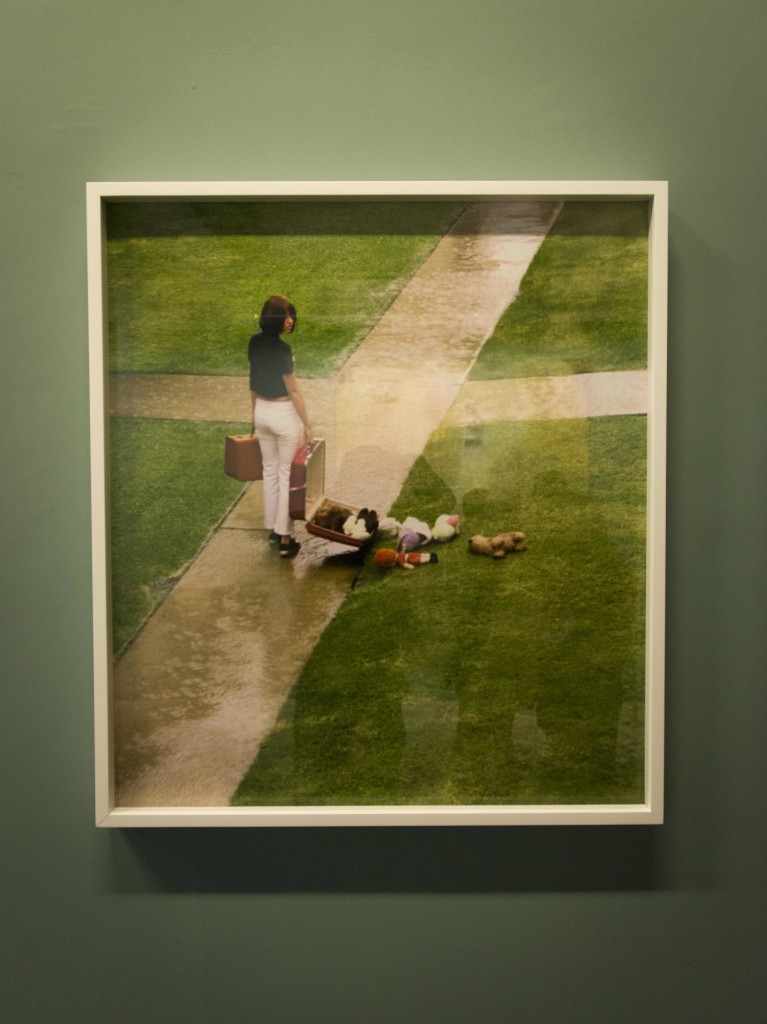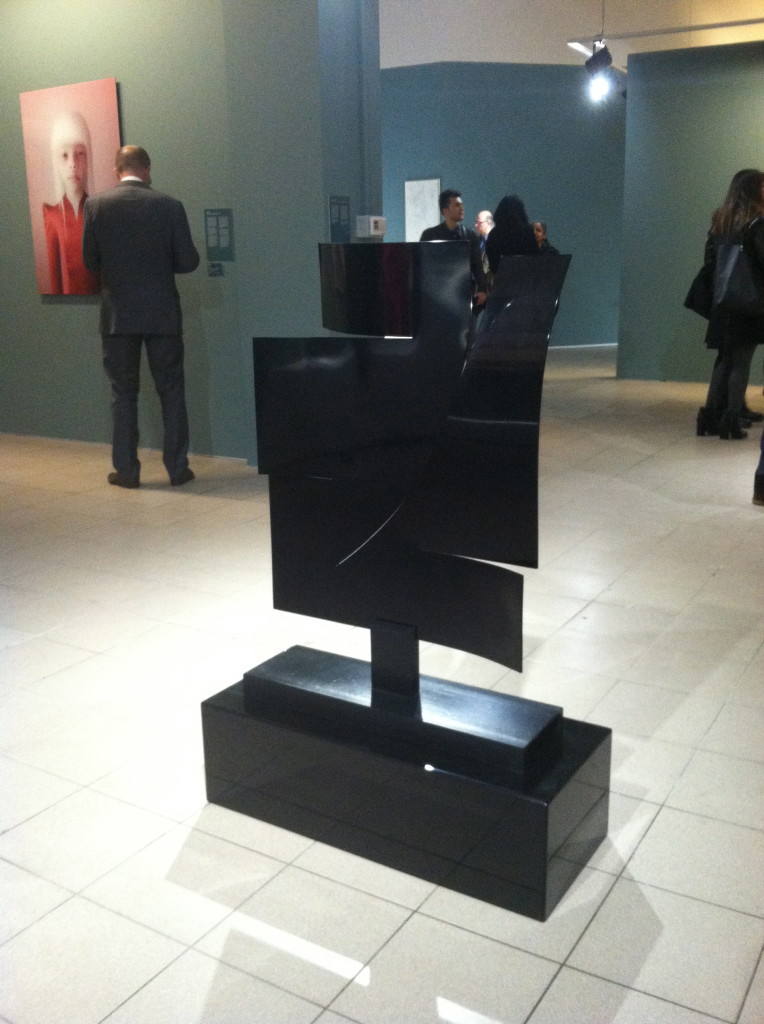As I walked in to the Elgiz Museum’s event for their latest exhibition, “Trace 14”, I immediately regretted my footwear. While throwing on clothes earlier that evening, I had glanced (and grimaced) at my heels for half a second before my trusty brown boots with worn-down soles won me over, like always. The crowd I wound through in the gallery was a collection of blazer-sporting professionals, coiffured elderly women who still manage to look hip, and young art students in graphic tees eyeing the free wine. A glass of white for myself in hand, I clicked my brown boots towards the exhibition.

The title of the exhibit, “Trace 14”, is a celebration of the Elgiz Museum’s 14th year. The pieces chosen by the curator are ones that “left a trace” on the collectors. Works included in the selection had changed how the collectors looked at a part of life or had brought something new to light for them; the pieces were anything that stayed with the collectors even after it had been taken out of the gallery. I told my uncle a while ago that I couldn’t really tell good wine from bad wine. He said simply, if you like it, then it’s good. There are endless debates about good and bad art, but in the end, I think art is highly personal – like wine, it’s a matter of taste. That’s why I like the idea behind the “Trace 14” collection. For the collectors, these are the Elgiz Museum’s best pieces by no other criteria than the fact that they like them.
While exploring the Elgiz collection, I tried to figure out which pieces left a trace on me and which just passed me by. A good test to try next time you wander around a gallery is just to see which pieces pull at your gaze, make you take a step back, and cause you to linger.
One piece that held me for a few minutes was a photograph by American photographer Alex Prager. As this woman walks away from something, stuffed bears tumble out of her suitcase and on to the wet ground. I don’t think she’ll stop to pick them up. To me, she seems to be abandoning innocence and childhood. Though it’s sad, I think she’s alright with it. Just because of where I am right now, that resonated with me.
Okay and here’s one that actually had zero impact on me. It’s a sculpture called Black Curve by Alexander Liberman. Sculpture rarely does it for me, and abstract sculpture even less so. I look at it, and my mind goes blank. This piece just didn’t talk to me. I guess it looks kind of like a piece of paper someone cut into and then bent a bit. But yeah, that’s it. And that’s fine because even though I can’t hear the piece, it is talking. Just to someone else.

After getting a glimpse at the art, I tucked my checked notebook under my arm, swiped a piece of bread from the basket on the bar, and settled down in the front room to enjoy the main attraction of the night. With a white jumpsuit and his hair pulled back in a bun, Ümit Turgay Durgun was making his very own traces as part of a graffiti performance. Durgun had written the name of the exhibition on the entrance wall a few months ago, and that night he was to expand his work.
I’ve never seen graffiti-making as a performance, but that is what it truly was. The piece was large, so he constantly had to climb up and down a ladder while spraying bursts of color or making long textured strokes with a sponge. At first, the piece didn’t look like anything. Durgun built up the background with wild and spontaneous additions of paint. While creating his piece, Durgun used his entire body. His movements flowed with the arcs and streaks of the paint. Durgun let his torso follow his arms as he waved the spray can across the wall. Sometimes his strokes pulled him from one end of the piece to the other.
Then, what is so magical about graffiti began to appear. Durgun started to create more definition by tracing purposeful black lines and soon, shapes sprung out of the wall. The 3-D illusion he was able to accomplish was very impressive (okay, admittedly, at this point a slight high from the paint fumes may have enhanced this effect). Regardless, the end result was a dynamic explosion of color and shapes that is sure to grab any museum visitor as soon as they walk in. It’s less cerebral than my favorite art, but it’s highly emotional. I’d venture to guess that this show-stopper left the most traces on the guests that night. (A close second would be the catering girls who wore long red dresses with thigh-high slits).
Museum director Billur Tansel explained the main goal of the exhibition as this: by sharing with the public those pieces that had the most impact on the Elgiz collectors, the museum hopes in turn to leave traces on its visitors. Despite what I said about art being personal, I think it would be hard to find someone who doesn’t respond to Ümit Turgay Durgun’s work and at least some of the gallery pieces. The “Trace 14” exhibition was successful for me because it made me think, it made me feel, and remnants of it have stuck around with me even after I jumped on the metro that night.
So dear readers, I invite you to dive in with an open mind, listen closely, and see whether this exhibition can make its mark on you, too. The “Trace 14” exhibition runs until Monday, 10 March.
Erin West is a contributor to Yabangee
Photo Credit: Mustafa Çankaya


























